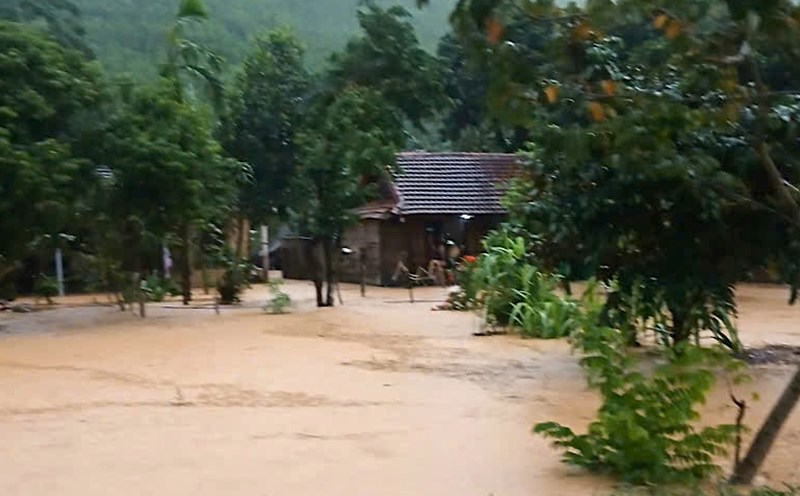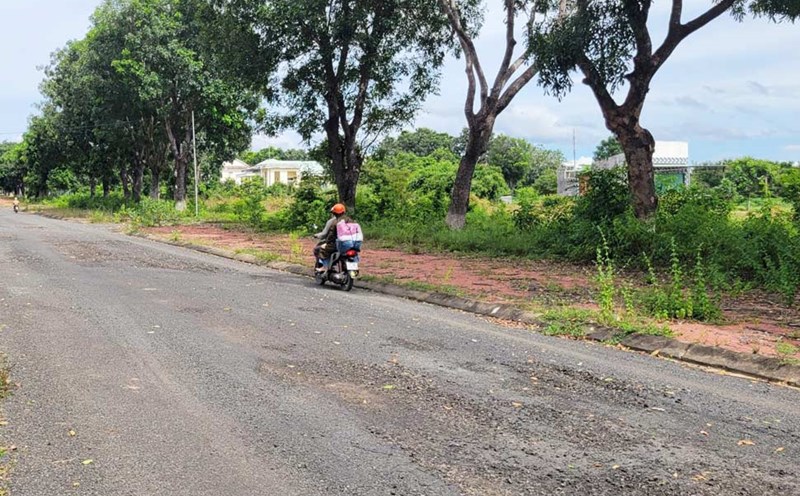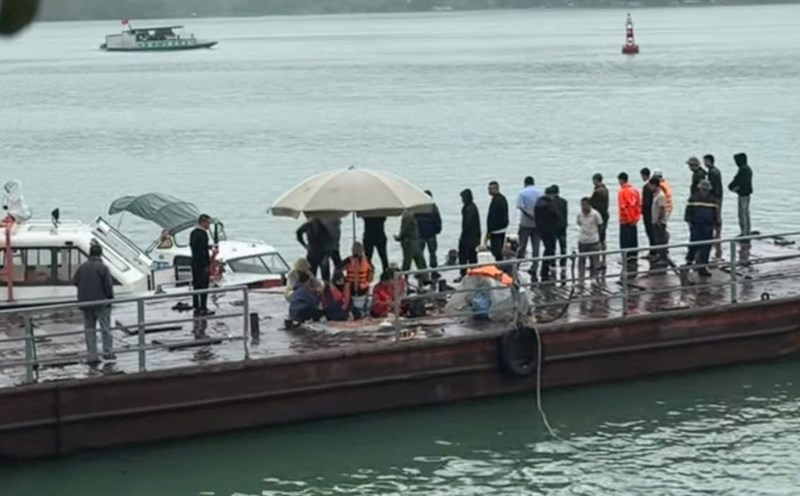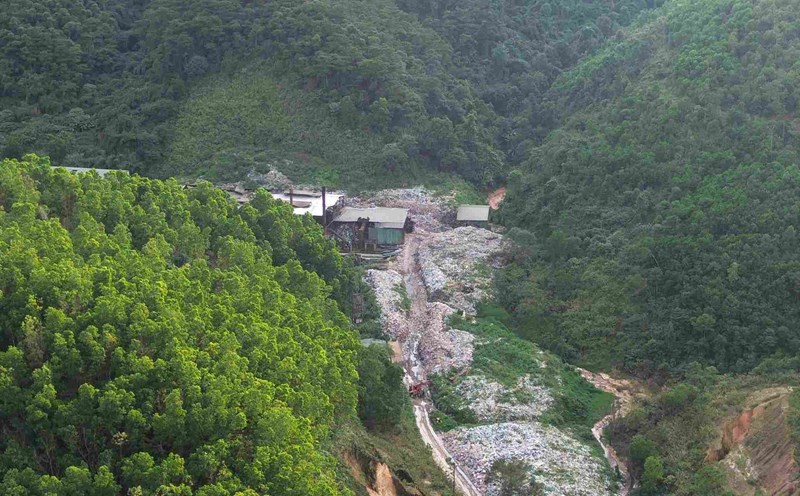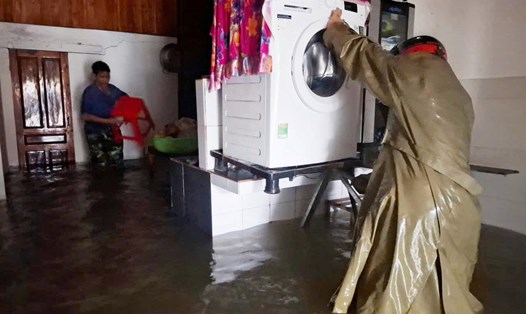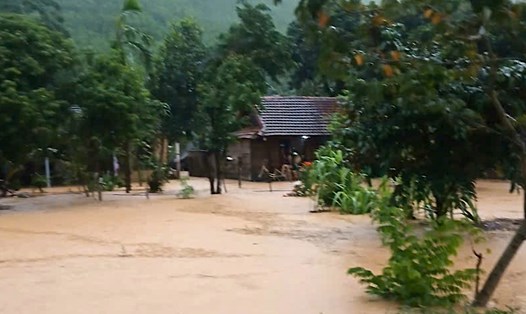For about 2 weeks now, rising water has caused many areas of Autumn-Winter rice in My Huong and My Phuoc communes (Can Tho city) to be deeply flooded. Although farmers mobilized pumps to work continuously to drain water, many plots of rice fields were in the middle of vacant fields, without surrounding embankments, so the water could not recede. The cost of mat pumping has increased while rice has not yet reached harvest time, causing farmers to face difficulties.
Mr. Huynh Van Le, a resident of My Phuoc commune, said that this year he rented 2 hectares of land for cultivation. The rice was in the flowering stage when the water rose to the top. The family has been pumping water continuously for nearly a week at a cost of about 5 million VND for oil, but the water level has not decreased. "No one is producing around, so there are no embankments, and the whole field is overflowed with water. This crop is considered a total loss, the land rent and production costs cannot be recovered," he said.
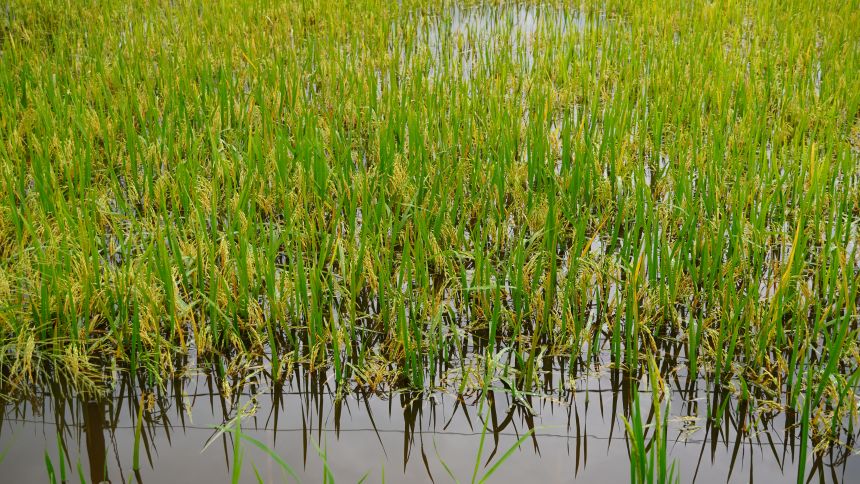
Similarly, another household in My Phuoc commune said that their family's rice field is the only area still cultivated in the area. Because the neighboring fields have been abandoned or harvested early, the embankments are no longer reinforced, and the flood water is so deep that the rice cannot be harvested at harvest time.
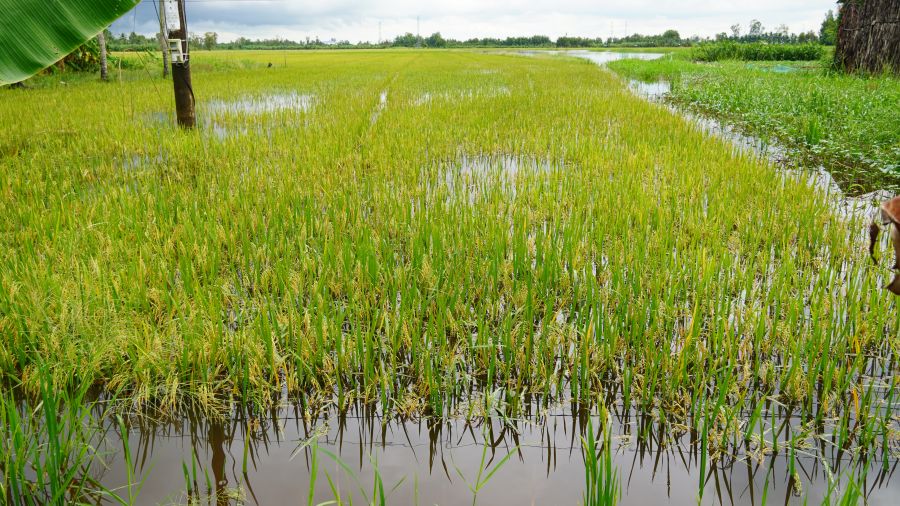
In My Huong commune (Can Tho city), a 3-hectare farming household said that for more than 2 weeks, deep floodwaters have caused about 1,000 m2 of rice to die, the rest to be flooded and damaged by golden apple snails. The family has to operate 2 pumps continuously, consuming about 50 liters/day and night.
"We only hope that the area in rice- tallest land will recover to save costs. Every year at this time, there is little water, but the rice price last year was high, so I took the risk to do this crop even though everyone said that this area was low and difficult to drain. Now it is considered a heavy loss," he shared.

A representative of the People's Committee of Tan My hamlet (My Huong commune, Can Tho city) said that in the area, there are about 200 hectares of Autumn-Winter rice in the harvest preparation stage, many low-lying areas are also flooded. Currently, the pumping station is operating continuously to support about 100 hectares, people are simultaneously pumping and reinforcing the embankment to limit damage.
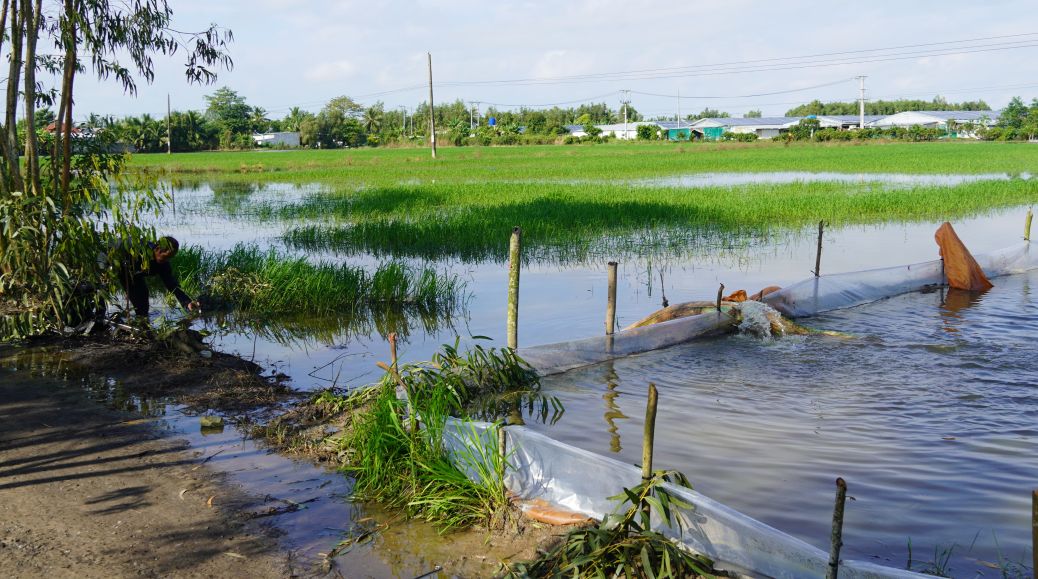
According to the Department of Crop Production and Plant Protection (Department of Agriculture and Environment of Can Tho City) by the end of October 2025, the city had 4,280 hectares of crops flooded due to high tides. Of which, fruit trees have the largest flooded area, with 3,842 hectares, the rest are rice and vegetables. Farmers are actively pumping water out, so they have not recorded any impact on crops.

To protect the remaining Autumn-Winter rice areas, the city's agricultural sector recommends that localities proactively reinforce embankments, prepare pumping facilities, and promptly respond to extreme weather developments. At the same time, ensure machinery and means of transportation during the concentrated harvest period, avoid being passive during storms.
With the Spring-Spring rice planted early, farmers need to fertilize and limit protein; increase potassium and supplement calcium and silicon to help the plants harden the stems and reduce falls in storms. Manage water using the interspersed dry flooding method, closely monitoring water sources.
For vegetables, strengthen timely inspection and treatment of pests and diseases. For fruit trees, monitor the weather, tie the facility to fall, harvest the ripe fruit early and proactively drain water, avoid prolonged flooding that damages the root system.
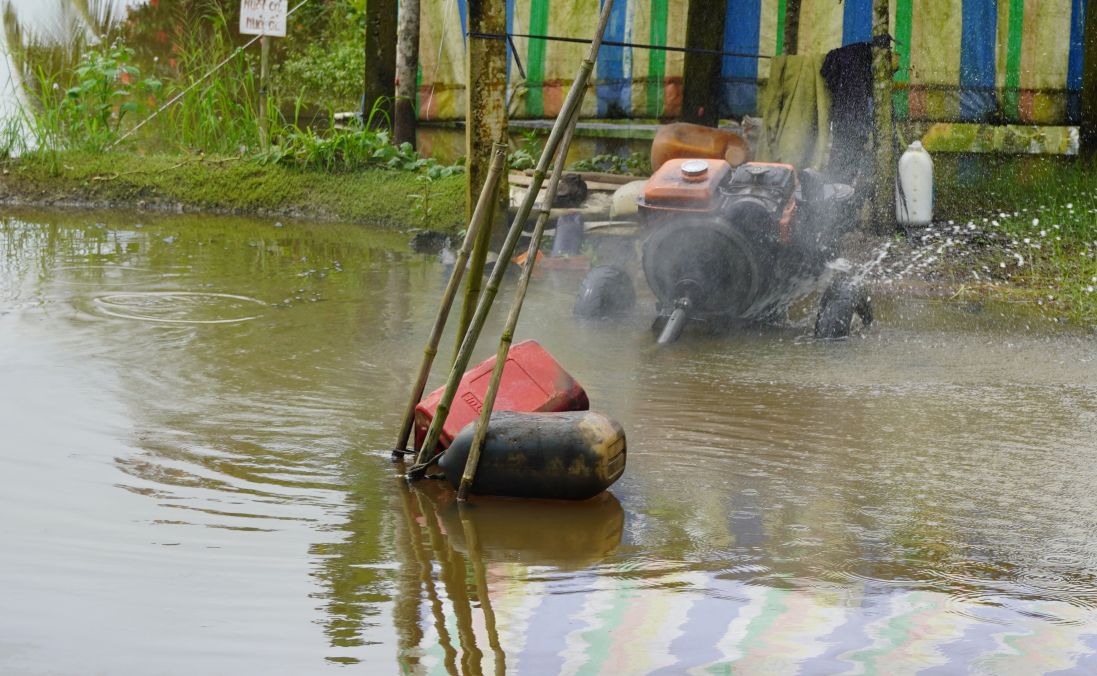
The Southern Institute of Water Resources Research believes that the water level in the upstream of the Mekong Delta in November 2025 will tend to decrease gradually, but the water level in the Cai Lon - Cai Be system will still be greatly affected by high tides and in-regional rain, combined with flood water causing slow drainage and high risk of flooding.
The risk of flooding may occur in coastal areas of the West and along the Cai Lon River such as Tay Yen, An Bien, Binh An communes (An Giang) due to limited drainage infrastructure; especially if heavy rain and the Southwest monsoon coincide with high tides on November 7 - 10, 2025.
Inland areas such as Binh Hoa, Go Quao, Long Thanh, Vinh Hoa Hung (An Giang); Hong Dan, Vinh Loc (Ca Mau); Vinh Yen, Vinh Thuan Dong (Can Tho City) are also likely to be flooded locally when the water level rises.


